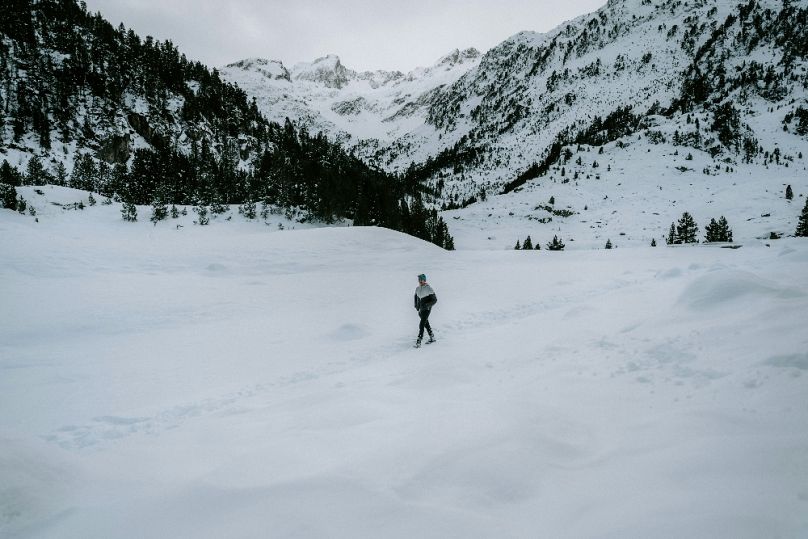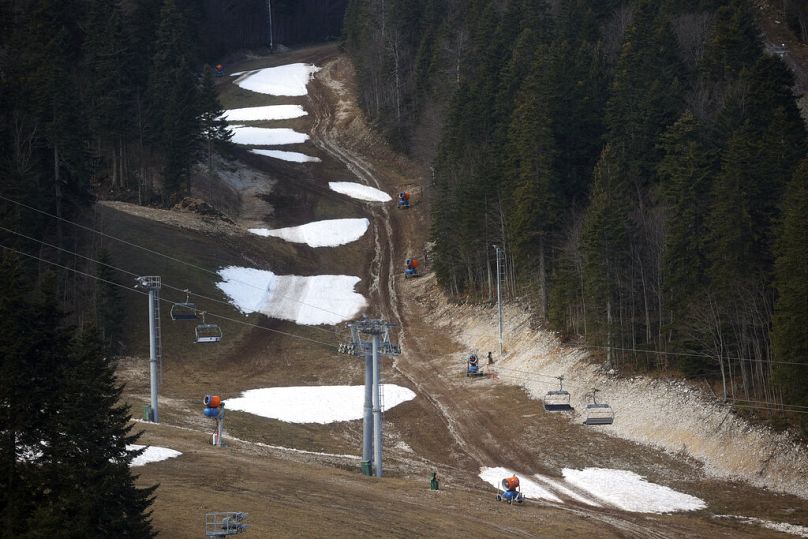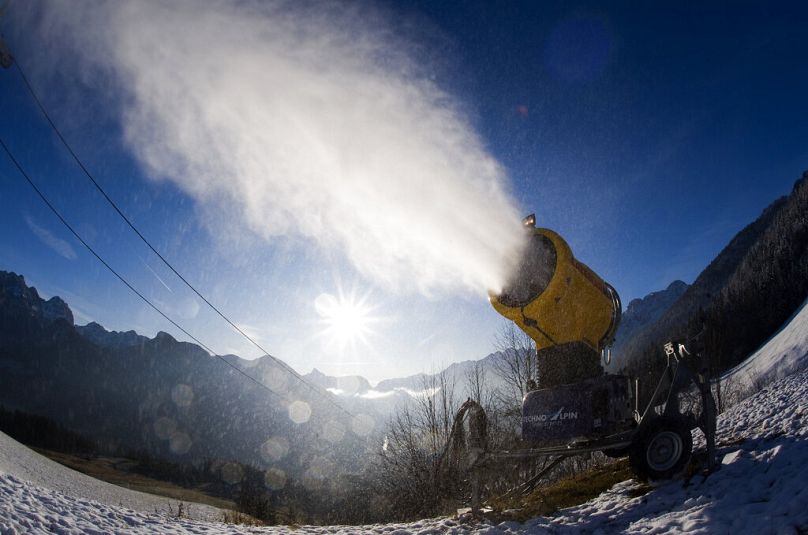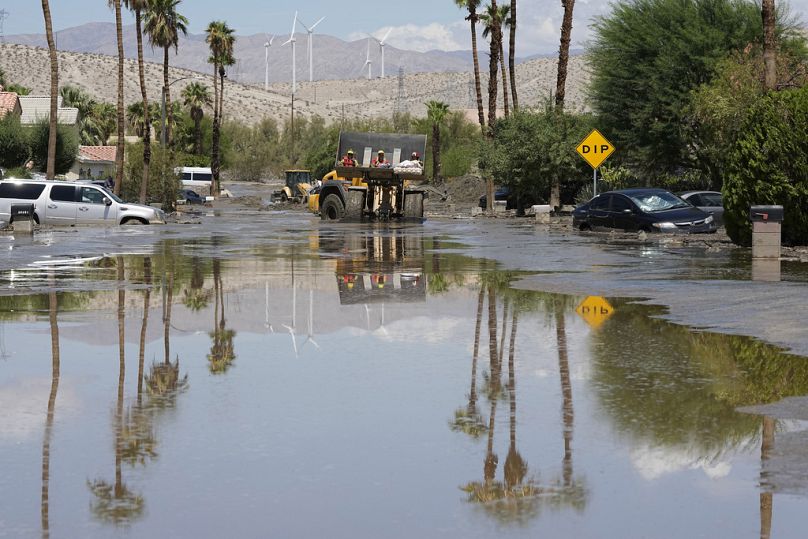Even snow cannons have stopped working due to the high temperatures.
Skiers across Europe are arriving at resorts to find historically low levels of snow following an exceptionally mild winter.
Stark images from resorts in the likes of France, Austria and Bosnia show huge swathes of mountains almost entirely bare.
It’s a striking contrast to how they usually look in mid-to-late February - typically the peak season for winter sports.
Which European ski resorts have been worst affected by the low snow levels?
In the popular French resort of Saint-Colomban-des-Villards in the Alps, ski lifts have stopped running completely. That’s thanks to a significant lack of snow following temperatures climbing up to 13C; its average February temperature is, in contrast, just over 4C.
Further south, the Artouste ski resort in the Pyrenees Atlantiques - also well known as the home of Europe's highest train, a narrow-gauge tourist line - is facing a similar situation. If you google the destination, you’ll be told it’s “temporarily closed”.
Local reports say piste grooming machines are lined up in a field next to ski lifts, also motionless for an indefinite period.
In Austria, the Tyrolean ski area of Mutterer Alm was forced to close, according to Kronen Zeitung, the country’s largest newspaper. Famous for its view of Innsbruck and the Karwendel mountain range, the resort’s website says it’s shut indefinitely.
The rise in temperatures is particularly painful for Bosnia.
This year, they should be celebrating 40 years since the capital Sarajevo hosted the Winter Olympics. Instead, the Women’s Ski Super G European Cup, set to be held last week at Bjelasnica, was cancelled due to lack of snow.
Skiers at Bosnia’s Mount Bjelasnica have been dragging their kit through mud to reach ski lifts.
Known as one of Europe’s cheapest ski destinations, many winter sports fans have decided to plough ahead with their trips to Mount Bjelasnica, despite the less-than-ideal conditions.
Why are snow cannons out of use at many ski resorts?
It’s not just ski lifts out of service at a number of resorts - but snow cannons, too.
Their job is to pump the pistes with artificial snow but their effectiveness is also temperature-dependent - a real concern for destinations battling shortages of fresh powder.
Earlier in February, at Mount Terminillo in Italy's Apennine Mountains, the cannons were abandoned after it became too hot to run them.
The resort is a favourite of skiers from Rome and usually has no problem with snowfall, considering it is some 2,217 metres high.
In Switzerland, too, the Leysin resort has seen its cannons lay idle on particularly warm days - something rarely experienced by the famously snowy nation.
How long could the ‘big melt’ last at European ski resorts?
The lack of snow across Europe comes as scientists announced it was the hottest first week of February on record.
The month is now on course to become the hottest since records began, with climate scientists warning that the planet is heating up at an 'accelerating' rate.
Global warming could put paid to ski slopes in the near future - but it isn’t just man made issues causing the so-called ‘big melt’.
Currently, the planet is in the midst of an El Niño - a phenomenon in the Pacific Ocean where changes in pressure cause warm water to flow East, bringing with it excessive heat.
It happens naturally on a fairly regular basis and is often followed by an El Nina which, in contrast, has a global cooling effect.
Skiers will be hoping the El Nina arrives soon to counter the desolate picture coming out of some of Europe’s favourite resorts.















